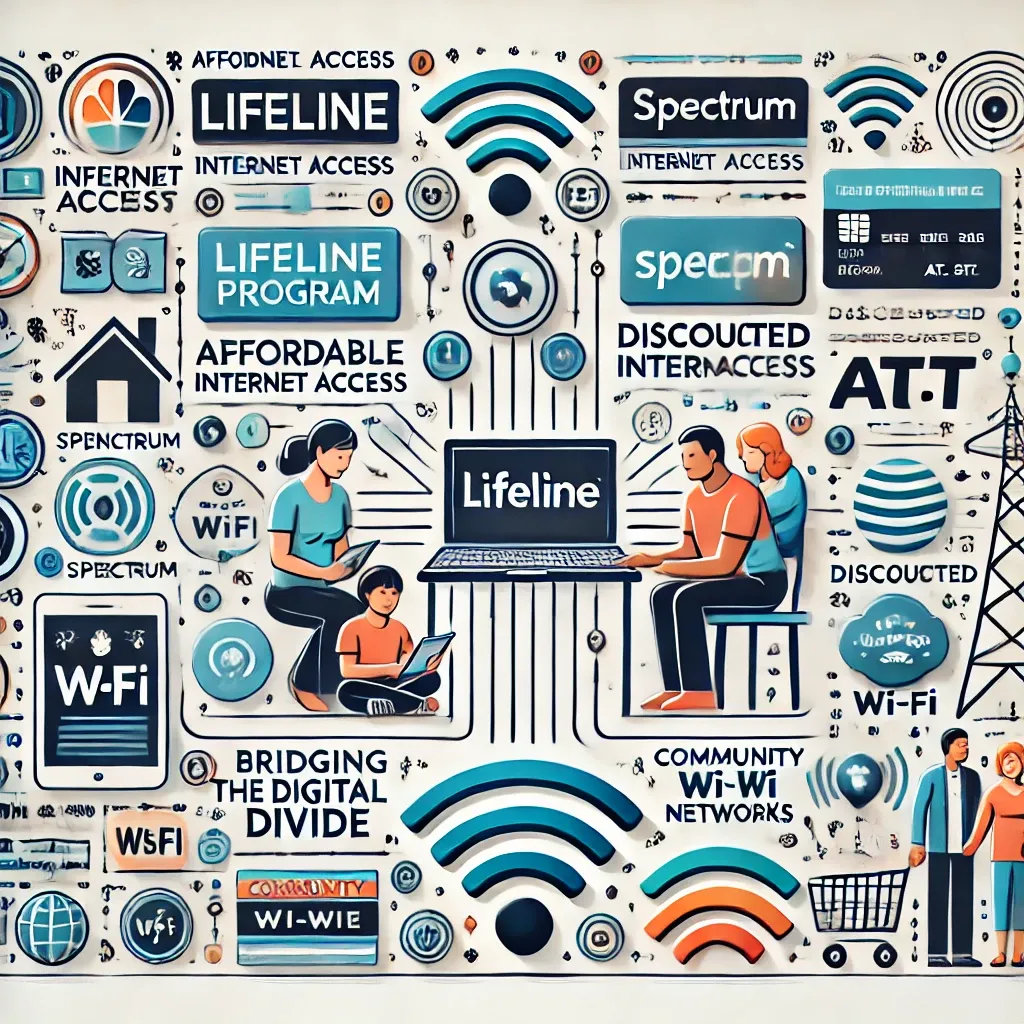Internet Access for Low Income Households In The US: Government Programs and How to Apply
Access to affordable internet is essential for low-income households in the United States, providing vital connections to educational resources, employment opportunities, healthcare, and other essential services. However, the high cost of broadband services can be a significant barrier for many families. To address this, the U.S. government and other organizations have implemented programs aimed at making internet access more affordable for low-income individuals and families.

Lifeline Program: A Lifeline for Low-Income Households
The Lifeline program is a longstanding federal initiative aimed at providing affordable communication services. Eligible participants can receive a discount of up to $9.25 per month on phone or internet services. For those living on Tribal lands, the discount increases to $34.25 per month.
Eligibility for the Lifeline Program
To qualify for Lifeline, you must meet one of the following criteria:
- Income Requirement: Your household income must be at or below 135% of the federal poverty guidelines.
- Participation in Government Assistance Programs: Eligible programs include:
- Medicaid
- Supplemental Security Income (SSI)
- Supplemental Nutrition Assistance Program (SNAP)
- Federal Public Housing Assistance (FPHA)
How to Apply
Applying for the Lifeline program is straightforward:
- Visit the Lifeline Website: Go to the official Lifeline program site (https://www.lifelinesupport.org) or contact an approved Lifeline service provider.
- Submit Proof: Provide documentation of income or participation in eligible government assistance programs.
- Approval and Discounts: Once approved, you’ll receive a monthly discount on your internet or phone bill.
Discounted Plans from Internet Service Providers
In addition to Lifeline, many Internet Service Providers (ISPs) offer discounted broadband plans for low-income households. These plans, often developed in collaboration with government programs, aim to close the digital divide and provide affordable internet options.
Comcast's Internet Essentials
- Eligibility:
Participation in federal programs such as SNAP, Medicaid, or public housing assistance.
Applicants must not have had Comcast internet service in the past 90 days.
- How to Apply:
Visit the Internet Essentials website (https://www.internetessentials.com).
Complete the application form and submit proof of eligibility, such as a benefits letter or program ID.
AT&T’s Access Program
- Eligibility:
Households participating in SNAP or receiving SSI benefits (in California only).
Applicants must live in AT&T's service area.
- How to Apply:
Visit the Access from AT&T website (https://www.att.com/access).
Fill out the application and upload the required documents.
Once approved, you can access internet plans starting at $10/month.
Spectrum's Internet Assist
- Eligibility:
Participation in the National School Lunch Program (NSLP), Supplemental Security Income (SSI), or Community Eligibility Provision (CEP).
Must not have had Spectrum internet service within the last 30 days.
- How to Apply:
Visit the Spectrum Internet Assist website (https://www.spectrum.com/internetassist).
Provide proof of eligibility, such as program participation documents.
Complete the application form online or via phone.
Community-Based Internet Access Initiatives
Beyond federal programs and ISPs, local governments and community organizations often provide additional resources to low-income households:
- Community Wi-Fi Networks: Many cities and towns offer free or low-cost public Wi-Fi hotspots.
- Low-Cost Internet Programs: Partnering with ISPs, community organizations provide affordable broadband services, especially in rural areas.
How to Find Local Programs
- Check with your local government office or community center for available options.
- Visit public libraries, which often offer free internet access and resources to help locate affordable services.
The End of the Affordable Connectivity Program (ACP)
The Affordable Connectivity Program (ACP), launched during the COVID-19 pandemic, provided vital broadband discounts of up to $30 per month (or $75 for Tribal lands) and device discounts of up to $100. Unfortunately, the ACP was discontinued in 2024 due to funding constraints. While its conclusion has left a gap in resources for some households, programs like Lifeline, ISP discounts, and community initiatives continue to provide essential support.


